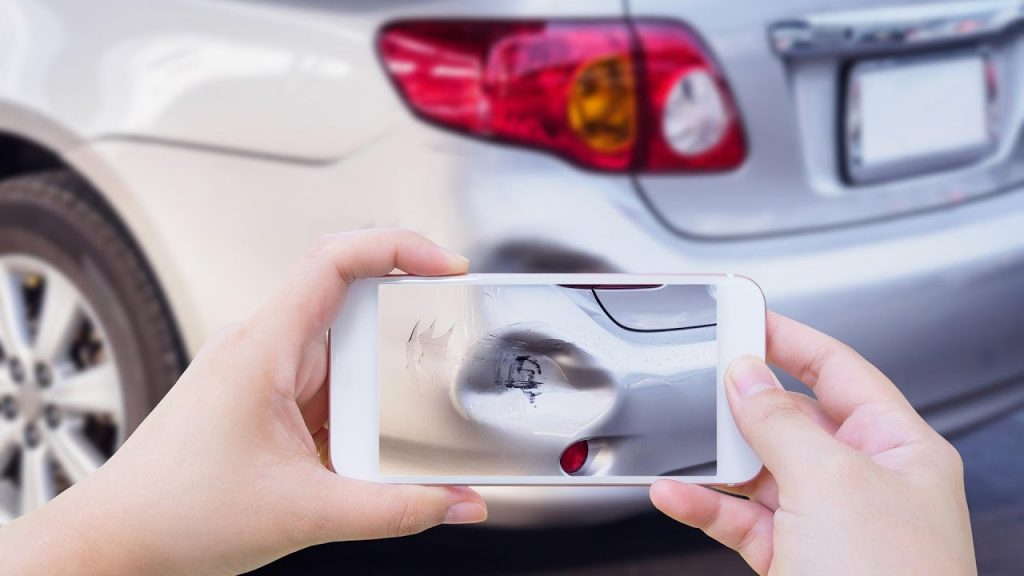Introduction
Purchasing a vehicle is an exciting milestone, but it also comes with responsibilities. One crucial responsibility is ensuring the appropriate insurance coverage for your car. Vehicle insurance safeguards you from unforeseen events that could result in substantial financial losses. For first-time buyers, navigating the world of vehicle insurance can be daunting. This article aims to guide first-time buyers through the process of selecting the right insurance policy by providing valuable tips and insights.
Understanding Vehicle Insurance
2.1 Types of coverage
Vehicle insurance typically offers coverage in three main areas: liability, collision, and comprehensive. Liability coverage protects you from claims made by others in the event of an accident. It includes bodily injury liability and property damage liability. Collision coverage pays for damages to your own vehicle in case of a collision with another vehicle or object. Comprehensive coverage provides protection against non-collision events, such as theft, vandalism, fire, or natural disasters.
2.2 Factors affecting insurance rates
Several factors influence insurance rates, including the make and model of the vehicle, driving history, age, location, and credit score. Insurance providers assess these factors to determine the level of risk associated with insuring a particular driver and vehicle. It’s important to be aware of these factors as they can significantly impact the cost of your insurance premiums.
Research and Comparison
3.1 Gathering information about insurance providers
When searching for vehicle insurance, conducting thorough research is vital. Start by gathering information about different insurance providers and their policies. Look for established and reputable companies that have a track record of excellent customer service and prompt claims handling. Visit their websites, request brochures, and gather information about the types of coverage they offer.
3.2 Comparing quotes and coverage options
To make an informed decision, it’s crucial to compare quotes and coverage options from multiple insurers. Consider the types of coverage each policy offers, the deductibles, and any additional benefits. Online comparison tools can help streamline this process and provide you with a comprehensive overview of available options. Be sure to evaluate both the cost and the coverage provided to find the best fit for your needs.
Determining Coverage Needs
4.1 Assessing personal requirements
Before finalizing an insurance policy, it’s essential to assess your personal requirements. Evaluate the value of your vehicle, your budget, and your risk tolerance. Consider factors such as your driving habits, the area you live in, and your financial situation when determining the level of coverage you need. It’s important to strike a balance between adequate coverage and affordability.
4.2 Understanding minimum legal requirements
While meeting the minimum legal requirements is necessary, it’s advisable to opt for coverage that adequately protects your assets and liabilities. Familiarize yourself with the minimum insurance requirements mandated by your local laws. These requirements vary by jurisdiction, and failing to meet them can result in fines or other penalties.
Choosing the Right Insurance Provider
5.1 Evaluating the reputation and financial stability of insurers
Selecting a reliable insurance provider is as crucial as choosing the right coverage. Look for insurers with a strong financial stability rating and a reputation for excellent customer service. A financially stable company is more likely to honor insurance claims and provide the support you need in times of distress. Verify the company’s credentials and check if it is licensed to operate in your jurisdiction.
5.2 Reading customer reviews and ratings
To gauge the quality of service provided by an insurance company, read customer reviews and ratings. Online platforms and consumer review websites offer valuable insights into the experiences of other policyholders. Pay attention to feedback regarding claims processing, customer support, and overall satisfaction. A company with positive reviews and a strong reputation is more likely to deliver a satisfactory experience.
Policy Terms and Conditions
6.1 Understanding policy exclusions and limitations
Once you have selected an insurance provider, it’s essential to understand the terms and conditions of your policy. Familiarize yourself with policy exclusions and limitations. These may include specific types of accidents or damages that are not covered under the policy. It’s important to be aware of these exclusions to avoid any surprises when filing a claim.
6.2 Familiarizing with deductible options
Deductibles are the amount you must pay out of pocket before your insurance coverage kicks in. Familiarize yourself with the deductible options available and choose one that aligns with your financial capabilities. Remember that a higher deductible generally leads to lower premiums but also means you’ll have to pay more in the event of a claim. Consider your financial situation and select a deductible amount that strikes the right balance for you.
Discounts and Savings
7.1 Exploring available discounts
Insurance providers often offer various discounts that can help reduce your premiums. Common discounts include safe driver discounts, multi-vehicle discounts, and discounts for installing safety features in your vehicle. Some companies also offer discounts for completing defensive driving courses or being a member of certain organizations. Inquire about these discounts and take advantage of the ones you qualify for to save on your insurance premiums.
7.2 Opting for higher deductibles to lower premiums
If you’re looking to further reduce your insurance premiums, consider opting for a higher deductible. A deductible is the amount you agree to pay before your insurance coverage comes into effect. By choosing a higher deductible, you assume more financial responsibility in the event of a claim, but it can lead to lower premiums. Evaluate your financial situation and choose a deductible that you can comfortably afford to pay if needed.
Handling Claims
8.1 Knowing the claims process
In the unfortunate event of an accident or damage to your vehicle, it’s crucial to understand the claims process. Familiarize yourself with the steps you need to take and the documentation required. Report the incident to your insurance provider as soon as possible and provide all necessary information and evidence. Follow the instructions provided by your insurer to initiate the claims process promptly.
8.2 Documenting accidents and damages
To ensure a smooth claims process, it’s important to document accidents and damages thoroughly. Take photographs of the scene, including any vehicles involved and the surrounding area. Document any visible damages to your vehicle and note down the details of the incident. If there are any witnesses, collect their contact information. These records will serve as crucial evidence when filing a claim.
Maintaining a Good Driving Record
9.1 Importance of safe driving habits
Maintaining a clean driving record is not only essential for your safety but also affects your insurance premiums. Insurance providers consider your driving history when determining rates. Avoid traffic violations, at-fault accidents, and other incidents that could negatively impact your driving record. Develop safe driving habits, such as obeying traffic laws, avoiding distractions, and staying focused on the road.
9.2 Avoiding traffic violations and accidents
Safe driving practices can help you avoid traffic violations and accidents, which can have a significant impact on your insurance rates. Observe speed limits, use turn signals, and follow traffic rules at all times. Stay alert and maintain a safe distance from other vehicles on the road. By being a responsible driver, you can keep your driving record clean and potentially qualify for lower insurance premiums.
Reviewing and Updating Policies
10.1 Regularly reassessing coverage needs
Vehicle insurance needs can change over time. It’s crucial to regularly review and reassess your coverage requirements. Major life events such as getting married, having children, or moving to a new location can affect your insurance needs. Evaluate your coverage annually and make adjustments as necessary. Keep your insurance provider informed about any changes to ensure you have the appropriate coverage in place.
10.2 Modifying policies when circumstances change
When your circumstances change, such as buying a new vehicle or moving to a different state, it’s important to update your insurance policies accordingly. Different vehicles may require different coverage, and insurance requirements can vary between jurisdictions. Contact your insurance provider and inform them about any changes. Failure to update your policies can result in coverage gaps or potential claims denial.
Additional Considerations
11.1 Usage-based insurance programs
Some insurance providers offer usage-based insurance programs that utilize telematics devices or smartphone apps to monitor your driving behavior. By participating in these programs, you can potentially earn discounts based on your safe driving habits. Consider exploring these options if you are a responsible driver and want to further reduce your insurance premiums.
11.2 Adding additional coverage for specific needs
Depending on your specific needs, you may want to consider additional coverage options. For example, if you frequently travel long distances, roadside assistance coverage can provide peace of mind in case of breakdowns. If you have valuable personal belongings stored in your vehicle, additional coverage for personal items may be worth considering. Assess your needs and discuss them with your insurance provider to explore appropriate coverage options.
Tips for Affordability
12.1 Paying premiums annually
Paying your insurance premiums annually, instead of monthly or quarterly, can result in cost savings. Many insurance companies offer discounts or lower interest rates for policyholders who choose to pay their premiums in a lump sum. If your budget allows, consider making an annual payment to reduce the overall cost of your insurance.
12.2 Bundling policies for multi-vehicle discounts
If you have multiple vehicles or other insurance needs, consider bundling your policies with the same insurance provider. Many insurers offer multi-vehicle discounts or discounts for combining auto insurance with other types of coverage, such as home or renters insurance. Bundling policies can lead to significant savings while simplifying your insurance management.
Understanding Policy Renewals
13.1 Reviewing policy terms during renewal
When your policy is up for renewal, take the opportunity to review its terms and conditions. Insurance companies may make changes to their offerings or update their rates. Carefully review any modifications and assess whether your coverage still meets your needs. If you find more favorable options available, consider switching insurers or negotiating with your current insurer for better terms.
13.2 Shopping for better deals
Insurance rates can vary among different providers, even for the same level of coverage. It’s wise to shop around and obtain quotes from multiple insurers before renewing your policy. Take advantage of online comparison tools or consult with independent insurance agents who can help you explore different options. By actively seeking better deals, you can potentially save money without compromising on coverage.
Conclusion
Purchasing vehicle insurance as a first-time buyer can be overwhelming, but it’s a crucial step in protecting yourself financially. By understanding the types of coverage, conducting thorough research, and assessing your personal needs, you can make informed decisions when selecting an insurance policy. Remember to review policy terms, maintain a good driving record, and explore available discounts to ensure affordability. Regularly reassess your coverage needs and stay informed about policy renewals to secure the best possible insurance coverage for your vehicle.
Frequently Asked Questions (FAQs)
- What is the minimum insurance coverage required for first-time vehicle buyers?As a first-time vehicle buyer, the minimum insurance coverage required depends on the jurisdiction you reside in. Each region or state has its own legal requirements for auto insurance. These requirements typically include liability coverage for bodily injury and property damage. It’s essential to familiarize yourself with the specific minimum coverage limits mandated by your local laws to ensure compliance.
- How can I find reliable insurance providers?Finding reliable insurance providers requires research and careful consideration. Start by asking for recommendations from friends, family, or colleagues who have had positive experiences with insurance companies. Additionally, you can utilize online resources and review websites to gather information about different insurers and read customer reviews. Look for insurers with a strong financial stability rating and a reputation for excellent customer service.
- What factors affect my insurance rates as a first-time buyer?Several factors influence insurance rates for first-time buyers. These factors include your age, driving history, the make and model of your vehicle, your location, and even your credit score. Insurance providers assess these factors to determine the level of risk associated with insuring you as a driver. It’s important to maintain a clean driving record, choose a vehicle with good safety features, and be aware of how these factors can impact your insurance premiums.
- What should I do if I need to file a claim?If you need to file a claim, it’s important to follow the claims process outlined by your insurance provider. Contact your insurer’s claims department as soon as possible to report the incident and initiate the claims process. Provide all necessary information, such as the details of the accident, photos, and any other relevant documentation. Be cooperative and responsive during the claims process to ensure a smooth resolution.
- Can I modify my insurance policy if I buy a new vehicle or move to a different state?Yes, you can modify your insurance policy if you buy a new vehicle or move to a different state. When purchasing a new vehicle, you will need to inform your insurance provider to update your policy with the new vehicle’s details. This may involve adjusting your coverage limits or adding additional coverage. Similarly, if you move to a different state, you will likely need to update your insurance policy to comply with the new state’s requirements. It’s important to notify your insurer promptly to avoid any coverage gaps.




